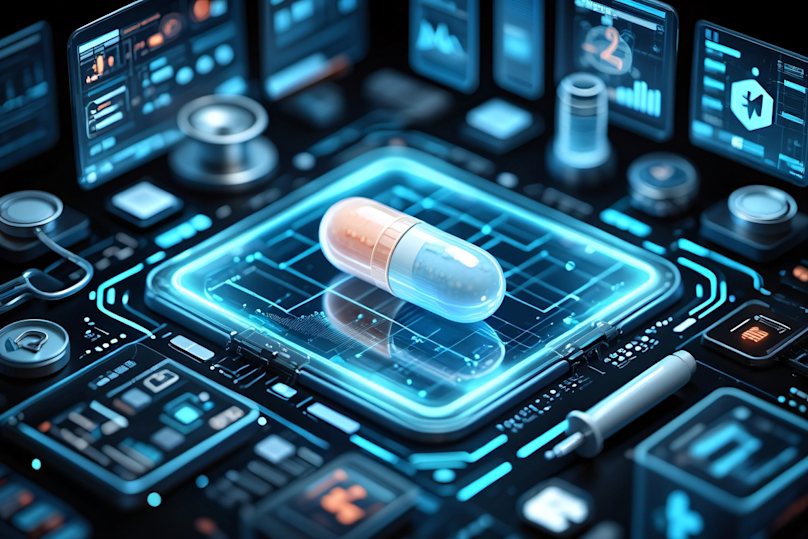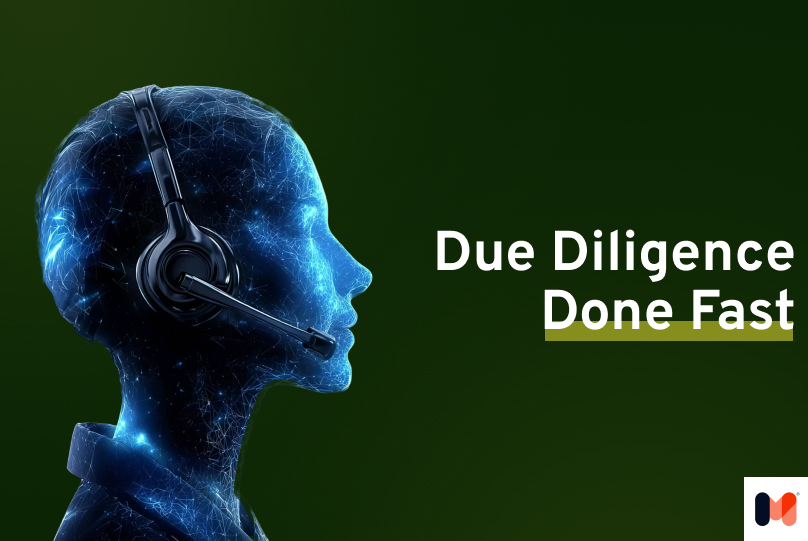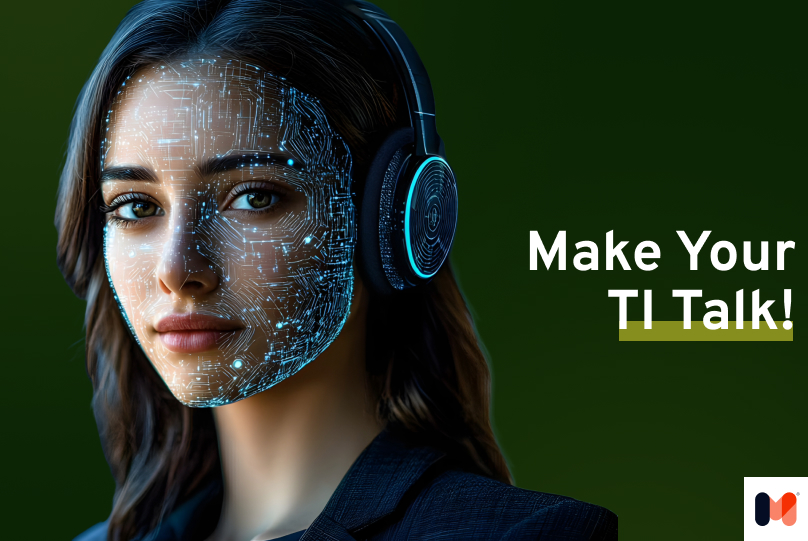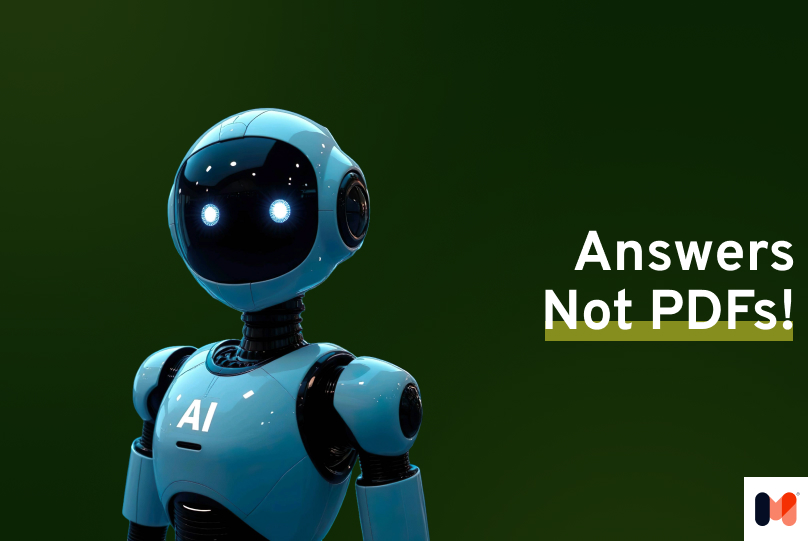What Is a Medicine Delivery App?
A medicine delivery app is a digital platform, usually mobile-first, designed to streamline the process of ordering, managing, and receiving pharmaceutical products. It connects patients or healthcare providers directly with pharmacies or logistics providers, automating everything from prescription uploads to doorstep delivery. Think of it as Uber Eats, but for your prescriptions.
Whether it's a solo pharmacy launching a branded app or a large aggregator facilitating orders across regions, these platforms aim to simplify access to medication—especially for elderly patients, people with chronic conditions, or those in remote areas. In fact, since the COVID-19 pandemic, demand for medicine delivery apps has surged, with many countries reporting a 60–80% increase in digital pharmacy users.
But medicine delivery isn’t just about logistics. These apps are becoming digital health assistants, offering refill reminders, doctor chat features, and integration with wearables. From a tech standpoint, they combine mobile app development, cloud infrastructure, and often AI to provide personalization, real-time tracking, and compliance automation.
For any startup or healthcare industry eyeing digital transformation, medicine delivery app development is now a strategic opportunity, not just a tech experiment.
Benefits of Medicine Delivery Apps for Patients and Providers
Let’s be honest—no one enjoys waiting in line at a pharmacy, especially when they're sick. That’s where medicine delivery apps step in, offering real-world relief for patients and operational gains for providers. But the value goes deeper than just convenience.
For Patients: Healthcare Without the Hassle
Imagine an elderly patient managing multiple prescriptions each month. With a medicine delivery app, they no longer need to worry about missing doses or traveling across town. Instead, they receive personalized reminders, upload prescriptions with a photo, and have their meds arrive on time—sometimes even with real-time courier tracking.
For chronic condition management, these apps are lifesavers—literally. Refill automation, dose tracking, and pharmacist chat options empower patients to take control of their health.
Some apps even integrate with smart pillboxes or wearables, turning daily routines into a seamless flow of care. In our Pregnabit project (more on that later), we supported remote monitoring during pregnancy—proof that medtech and delivery can blend beautifully.
For Healthcare Providers and Pharmacies: Streamlined and Scalable
On the provider side, medicine delivery app development is about scale and precision. Pharmacies can expand their customer base beyond physical locations. No more bottlenecks at the cash register or messy paper prescriptions—apps manage orders, verify dosages, and track deliveries, all in real time.
Moreover, healthcare professionals can access usage data, anticipate supply needs, and even improve patient adherence through in-app insights. It’s not just delivery—it’s better care coordination.
In markets where competition is fierce and patients expect same-day service, apps offer a serious competitive edge.
Why Invest in Medicine Delivery App Development in 2025?
If you’re a startup founder, pharmacy chain executive, or healthcare innovator, you’ve probably felt the pressure to go digital—or risk falling behind. In 2025, medicine delivery app development isn’t just a nice-to-have; it’s becoming a market standard.
Here’s why now is the moment to build.
Global Demand Is Skyrocketing
According to a 2024 report by Research and Markets, the global ePharmacy market is projected to reach USD 294.35 billion by 2030, growing at a CAGR of 17.2% from 2023 to 2030. This explosive growth is fueled by rising healthcare consumerism, the shift toward telemedicine, and increasing demand for convenience-driven services.
In urban centers and developing regions alike, people are moving from physical counters to smartphone clicks, expecting reliable, fast, and secure access to their prescriptions.
Healthcare Is Going Hyperlocal and Hyperpersonal
Today’s users expect more than just delivery. They want personalized medication reminders, auto-refill subscriptions, and pharmacy chat support at their fingertips. Leading medicine delivery apps integrate AI to provide relevant suggestions and adapt to users' behavioral patterns.
This evolution transforms apps into digital health companions, not just order forms.
Regulatory Momentum Is On Your Side
Healthcare authorities worldwide are opening up to digital-first infrastructure. Countries like Germany, India, and the U.S. have made moves to legalize e-prescriptions and enable verified digital fulfillment. This trend significantly lowers entry barriers for new platforms.
Compliance is no longer a blocker—it’s an opportunity to build trust and scale.
It's Still an Untapped Niche in Many Regions
Despite the buzz, much of the global population, especially in rural or semi-urban areas, still lacks access to fast, affordable medicine delivery. That’s where agile, well-designed apps can make a real difference, especially with partnerships involving local pharmacies or last-mile logistics providers.
Matt Sadowski
CEO of Mobile Reality
Custom Software and SaaS Development Tailored to Your Business Needs
We deliver innovative and scalable software solutions designed to help businesses streamline operations, enhance user experiences, and drive growth.
End-to-end development of custom software solutions and SaaS platforms.
Secure and scalable applications designed for business growth.
Expertise in cloud infrastructure, API integrations, and data management.
Support for product lifecycle management, from concept to deployment.
Customized AI agents and tools and automation to boost productivity.
Key App Features of an Online Medicine Delivery App Business
Building a great medicine delivery app isn’t just about putting pills on a map and adding a checkout button. To truly serve users—and stand out in a crowded market—you need thoughtful, user-centric features that make healthcare feel personal, safe, and instant.
Here’s what separates a forgettable app from a daily essential.
🗺️ Real-Time Order Tracking as a Key Feature
Just like we track our food or a taxi, patients want to know exactly when their medications will arrive. Live GPS tracking helps reduce anxiety, especially for critical prescriptions. Some apps even send alerts if a delivery is delayed or handed off to a pharmacy partner nearby.
📤 Prescription Upload & Verification in Medicine App
Gone are the days of blurry WhatsApp images. Your app should let users snap a quick photo, scan a QR code from a doctor, or upload an e-prescription. On the backend, licensed pharmacists or AI-powered validation modules review the data, ensuring accuracy and compliance.
💬 In-App Chat with Pharmacists
Have a question about dosage or potential side effects? In-app messaging or voice/video chat brings the pharmacist directly to the user’s screen. It's a feature that builds trust and mimics the personal touch of a physical pharmacy.
🔐 Secure Payments & Insurance Integration in Pharmacy Delivery App Development
From credit cards to digital wallets and even insurance reimbursements, your app should offer flexible, secure app payment options. Add multi-factor authentication, tokenized transactions, and optional invoice downloads for extra peace of mind.
📅 Smart Refill Reminders
Set it and forget it. Patients can schedule monthly refills and receive reminders just before they run out. Bonus points if the app uses past behavior to recommend timing or dosage adjustments.
🧠 AI-Based Personalization
AI isn’t just a buzzword. Smart medicine delivery apps analyze user behavior, preferences, and past prescriptions to recommend bundles, suggest generics, or remind users about seasonal health needs like flu meds or allergy treatments.
Types of Business Models: B2B, B2C, and Pharmacy Chains
When considering medicine delivery app development, it's essential to understand the different models available. Each serves distinct user bases and operational needs. Let's explore the three primary types:
🧑💼 B2B Medicine Delivery Apps
Target Users: Hospitals, clinics, eldercare centers, and bulk medicine purchasers.
Purpose: Streamline bulk ordering, inventory management, and supply chain logistics.
Key Features:
Centralized order dashboards
Multi-user access controls
Integration with existing inventory systems
Invoice-based payment options
Real-World Example:
MedicoStores: This platform offers a B2B marketplace connecting stockists and retailers, facilitating efficient distribution of medical supplies and pharmaceutical products. Their Medico Delivery service ensures fast and efficient deliveries directly from stockists to retailers or end consumers.
🛍️ B2C (Direct-to-Consumer) Medicine Delivery Apps
Target Users: Individual patients seeking convenient access to medications.
Purpose: Provide users with the ability to order medications online and have them delivered to their doorstep.
Key Features:
User-friendly interfaces
Prescription upload and validation
Real-time order tracking
In-app consultations with pharmacists
Real-World Examples:
1MG: A popular app in the USA that allows users to purchase medicines quickly, offering a robust user network and a wide range of medical products.
Capsule: A New York-based startup promising same-day free delivery of medications, focusing on a seamless user experience.
🏥 Chain White-Label Pharmacy App
Target Users: Established pharmacy chains aiming to digitize their services.
Purpose: Enhance customer loyalty and streamline operations through branded digital platforms.
Key Features:
Integration with loyalty programs
Store locator functionalities
Options for in-store pickup and home delivery
Advanced analytics dashboards
Real-World Examples:
CVS Pharmacy: One of the most popular medicine delivery apps in the USA, enabling customers to renew prescriptions, get over-the-counter medicines, and track their medical records.
Walgreens: Offers prescription delivery services, allowing customers to manage their medications and health needs through their app.
Must-Have Technology Stack and App Solutions
Let’s face it—choosing the right tech stack can feel like staring into a soup of acronyms: React, AWS, MongoDB, Flutter, Node.js. But in medicine delivery app development, your tech choices will directly impact how secure, fast, and scalable your app becomes. Whether you're building a lean MVP or a robust pharmacy ecosystem, here's a stack that works.
Frontend: Where UX Happens
React Native (for cross-platform apps): With a single codebase for iOS and Android, you save time and budget—crucial for startups.
Next.js or React.js (for web dashboards): Perfect for admin panels, pharmacy portals, or analytics hubs. They enable smooth interfaces and server-side rendering (great for SEO, too).
💡 Why it matters: A smooth UI builds trust. Users ordering medication—often for urgent needs—won’t tolerate a laggy or confusing screen.
Backend: The Brain of Your App
Node.js with NestJS: Fast, scalable, and battle-tested in real-time apps. NestJS adds structure to Node, making it ideal for managing prescriptions, chat support, and delivery charges status.
GraphQL (optional): If your app grows into a complex system with personalized queries (e.g., tailored health content or subscription plans), GraphQL helps streamline communication between frontend and backend.
💡 Why it matters: This stack scales with your business and is flexible enough to add features like AI modules or loyalty programs later.
Cloud & DevOps Services: Stay Online and Secure
Amazon Web Services (AWS): Offers compliance-ready infrastructure, including HIPAA-aligned services. You get auto-scaling, uptime monitoring, and global content delivery.
Terraform (for infrastructure-as-code): Allows repeatable, auditable deployment setups—ideal when dealing with regulated healthcare business data.
💡 Why it matters: A stable, secure cloud environment ensures your app won’t crash when 10,000 users log in for their flu meds on the same day.
Data & AI Tools: Smart Features That Learn
MongoDB: A flexible, NoSQL database ideal for storing diverse user profiles, scanned prescriptions, and chat histories. It's secure, scalable, and integrates well with cloud services.
LLMs (Large Language Models) like OpenAI’s GPT or Google’s Gemini: These can be integrated right away to power:
AI-driven chat with pharmacists
Auto-suggestions for over-the-counter meds
Natural language understanding of prescriptions or questions
Personalized health content generation (e.g., “How to take your medication” in plain English)
💡 Example: Imagine a patient types, “What time should I take my antibiotics?” An LLM-powered assistant provides a safe, friendly answer based on doctor instructions, cutting down on support tickets.
R / Python (for custom models later): Once you gain enough user data, you can build proprietary models for churn prediction, personalized medication plans, or fraud detection in prescription validation.
💡 Why it matters: LLMs let you launch with AI-powered experiences today—without a full AI team or expensive infrastructure. As your platform grows, custom models become the next step.
🔒 Security & Compliance Toolkit
OAuth2.0 / JWT: For secure login and token-based sessions.
Data encryption (at rest and in transit): To protect sensitive health data.
Audit trails: Especially important for pharmacy compliance and user trust.
How AI and Machine Learning Enhance Custom Medicine Delivery App
Let’s clear something up: AI in medicine delivery apps isn’t just about showing off. It’s about making life easier for patients, smarter for providers, and smoother for operations. With today’s tools—from LLMs like GPT to tailored ML algorithms—you can build intelligent features without reinventing the wheel. Here’s how it all comes together.
Conversational AI for Smarter User Experience
You don’t need to hire a 24/7 support team. With LLMs (think OpenAI GPT, Claude, or Gemini), you can deploy chatbots that understand medical questions in human language.
Examples:
“Can I take this on an empty stomach?” → LLM parses and responds politely.
“Order the same meds as last month.” → NLP engine fetches the right prescription.
Bonus: These assistants can switch tone (formal for seniors, casual for Gen Z) and support multiple languages.
AI for Prescription Verification
Forget manual verification delays. You can integrate computer vision models or start with LLMs paired with OCR (optical character recognition) to:
Read the uploaded prescription images
Flag mismatches or low-quality scans
Auto-fill prescription data for review by pharmacists
This speeds up the order process and reduces human error.
Personalized Medicine Suggestions
Using behavioral data + simple machine learning models, apps can:
Recommend generic alternatives (saving money for users)
Suggest dosage reminders based on time zones and sleep patterns
Notify users of medicine conflicts or missed refills
Sooner rather than later, you could even integrate wearable data (e.g., heart rate or blood pressure) for contextual recommendations.
Smart Delivery Forecasting for Clients
Machine learning can help optimize logistics by:
Predicting order volume spikes (e.g., cold & flu season)
Calculating the best routes for same-day delivery
Suggesting pharmacy inventory restocks in advance
In our own experience at Mobile Reality, AI-backed sales forecasting tools have saved clients 10–20% on supply chain costs. That same logic applies beautifully here.
🛡️ Fraud Detection & Compliance Automation
AI helps keep things clean:
Flag suspicious patterns in repeated prescriptions
Checks for forged documents
Ensures compliance with local healthcare regulations using rule-based ML systems
Bottom line: AI and ML turn a basic medicine delivery app into a trusted digital pharmacy. Start lean with LLMs. Scale later with custom predictive models.
The Role of UX/UI Design in Medicine Delivery App Success
A well-designed medicine delivery app isn’t just about looking polished—it’s about making the entire healthcare experience intuitive, trustworthy, and accessible. In medicine delivery app development, UX/UI is often the silent difference between user adoption and abandonment.
Consider the emotional state of your users. Many open a healthcare app while feeling unwell, stressed, or in a hurry. That’s why good design starts with empathy. The interface needs to feel familiar even on first use—clean layouts, clear typography, and predictable interactions go a long way in reducing friction. When a patient can upload a prescription or reorder medication in seconds, that’s UX doing its job.
Accessibility is another core pillar. Your audience likely spans different generations and physical abilities. Designing for older adults might mean larger tap areas, simpler language, or voice navigation options. For visually impaired users, screen reader compatibility and high-contrast themes can make or break usability. The most successful apps don’t just comply with accessibility standards—they embrace inclusive design from the start.
Trust is also communicated visually. In healthcare, users must feel that they’re interacting with a secure, legitimate, and professional system. Design choices—such as consistent use of brand colors, clear call-to-action buttons, and reassuring confirmation messages—subtly reinforce that trust. A cluttered or poorly styled app, no matter how powerful behind the scenes, risks sending the opposite message.
At Mobile Reality, we treat design as a business function, not just a creative one. Using tools like Figma, our UX/UI team prototypes and user-tests every core screen before development begins. This avoids rework, keeps users in focus, and ensures the app doesn’t just function, but feels great to use.
In a competitive space, medicine delivery apps that prioritize thoughtful, user-centered design win on engagement, retention, and long-term growth. Design isn’t a finishing touch; it’s the foundation.
Backend & Frontend Development: How It Works in Practice
Every medicine delivery app has two sides: what users see and interact with, and what happens behind the scenes to make it all work. Successful app development depends on strong alignment between these layers—frontend and backend, each playing a distinct role in delivering a seamless experience.
Frontend: Building the User-Facing Experience
The frontend is the visible part of the application. It’s what patients use to browse medications, upload prescriptions, place medicine orders, and track deliveries. At Mobile Reality, we typically build frontends using React Native for mobile apps and React.js or Next.js for web portals. This approach allows us to deliver smooth interfaces, fast performance, and code reusability across platforms—all while keeping costs manageable.
Thoughtful UX/UI integration is critical here. Whether it’s an elderly user navigating medication refills or a pharmacist reviewing an urgent order, the design must be intuitive and fast. Any delays or confusion at the frontend level can quickly erode trust and impact user retention.
Backend: Powering the Logic and Infrastructure
Behind the scenes, the backend does the heavy lifting. It handles authentication, order processing, real-time updates, secure storage, AI integrations, and communication between all components. We rely on Node.js with NestJS to create a scalable and structured environment capable of supporting personalized medicine recommendations, automated prescription validation, and complex logistics workflows.
Here’s a real-world flow: A user uploads a prescription photo. The backend receives it, stores it securely (encrypted at rest), and queues it for pharmacist review. Simultaneously, it checks pharmacy stock, verifies address zones for delivery, calculates ETA, and updates the frontend with progress. The entire process needs to happen quickly, and without error.
Scalability is essential in both layers. A solid backend ensures you can grow from 100 to 100,000 users without performance bottlenecks. And a modular frontend lets you test and release new features—like pharmacist chat or wellness content—without rewriting the entire application.
The real magic happens when backend and frontend are tightly integrated. When your development team treats them as part of a single, coordinated system—not separate silos—you avoid inconsistencies, reduce bugs, and ship updates faster.
That’s why in medicine delivery app development, we focus on full-stack fluency. It’s how we help our clients deliver not just a functioning app, but a resilient, user-friendly platform that grows with their business.
How to Ensure Compliance and Security in Healthcare Apps
When handling sensitive health information, there are no shortcuts—compliance and security are non-negotiable. Whether you're launching in the EU, the U.S., or anywhere else, your medicine delivery app must be built on a foundation of trust, transparency, and regulatory readiness.
United States: HIPAA Compliance
In the U.S., the Health Insurance Portability and Accountability Act (HIPAA) sets the standard for protecting sensitive patient data. Any entity that handles protected health information (PHI) must ensure that all required physical, network, and process security measures are in place and followed.
Key aspects of HIPAA compliance include:
Privacy Rule: Establishes national standards for the protection of certain health information.
Security Rule: Sets standards for securing electronic PHI (ePHI).
Breach Notification Rule: Requires covered entities to notify affected individuals, HHS, and, in some cases, the media of a breach of unsecured PHI.
For more detailed guidance, the U.S. Department of Health & Human Services provides resources for developers of health-related mobile apps: HHS.gov
European Union: GDPR Compliance
In the EU, the General Data Protection Regulation (GDPR) governs the processing of personal data, including health information. GDPR compliance is mandatory for any organization that processes the personal data of EU citizens, regardless of where the organization is based.
Key principles of GDPR include:
Lawfulness, Fairness, and Transparency: Data must be processed lawfully, fairly, and in a transparent manner.
Purpose Limitation: Data must be collected for specified, explicit, and legitimate purposes.
Data Minimization: Only data necessary for the intended purpose should be collected.
Accuracy: Data must be accurate and kept up to date.
Storage Limitation: Data should be kept in a form that permits identification of data subjects for no longer than necessary.
Integrity and Confidentiality: Data must be processed in a manner that ensures appropriate security.
For a comprehensive overview of GDPR compliance for digital health apps, refer to this resource: Taylor Wessing
Case Study Highlights: Telemedicine & Medtech Solutions by Mobile Reality
At Mobile Reality, we specialize in creating scalable, secure, and innovative healthcare platforms. Our experience spans AI-powered telemedicine tools, content management systems for life sciences, and high-performance marketing engines for medtech. Below are a few highlights that demonstrate the breadth of our healthcare and medtech expertise.
Pregnabit – Remote Fetal Monitoring for Nestmedic
Pregnabit is a breakthrough telemedicine product that lets pregnant women record and transmit CTG readings from home. In partnership with Nestmedic, we built and trained custom machine learning models in R and Python to detect early signs of fetal distress, such as tachycardia, bradycardia, and abnormal uterine activity.
We also handled AWS-based cloud deployment to ensure 24/7 availability, real-time processing, and compliance with medical data regulations. The result: improved maternal care access without compromising on data accuracy or medical safety.
Exfluential – Secure Health Content Platform for Life Sciences
For Exfluential, we developed a web platform that helps medical device and pharmaceutical companies securely distribute actionable content to doctors and patients. The platform supports customizable dashboards, permission-based content access, and analytics to track engagement performance.
With a backend in Node.js/NestJS and a frontend in Vue.js, we delivered a system optimized for scale, security, and ease of use—ideal for complex B2B healthcare workflows where compliance meets marketing.
IDEALE – High-Performance Landing Pages for Aesthetic Medicine
ideale.pl is a Polish platform in the aesthetic medicine space where Mobile Reality supported continuous improvements to its marketing infrastructure. Our work focused on optimizing performance, UI/UX responsiveness, and integration with high-volume advertising campaigns across Google Ads and Facebook.
While not a full-stack medtech app, IDEALE showcases our ability to collaborate in data-driven environments, support performance marketing goals, and fine-tune landing pages to maximize lead conversion in a regulated and trust-sensitive sector.
Matt Sadowski
CEO of Mobile Reality
Dynamic and Scalable Web Applications with React.js
We craft high-performance, interactive web applications with React.js to help businesses deliver exceptional user experiences and drive growth.
Custom React.js web applications tailored to your business goals.
Fast, responsive, and scalable solutions optimized for performance.
Integration of AI agents to automate workflows and enhance user interaction.
Expertise in building progressive web apps (PWAs) and complex UI/UX interfaces.
Seamless integration with APIs, cloud services, and third-party tools for maximum scalability.
Cost Breakdown of Medicine Delivery App Development
The cost of developing a medicine delivery app varies significantly depending on its complexity, business model, and compliance needs. At Mobile Reality, we’ve delivered healthcare applications ranging from early MVPs to full-scale enterprise platforms, and we understand how to shape the right scope to match your goals.
Start with a Lean MVP to Validate Your Concept
For startups and early-stage ventures, the first step is often a Minimum Viable Product. An MVP typically includes core functionalities such as user registration, prescription upload, product browsing, a secure checkout process, and an admin dashboard for pharmacy staff. It also ensures compliance with basic healthcare data standards like GDPR or HIPAA.
The average investment for a custom MVP medicine delivery app falls between €30,000 and €50,000, depending on the depth of features, design needs, and integrations.
This phase allows you to get a working product to market quickly—often within 10–14 weeks—collect feedback, and prove product-market fit without overcommitting budget.
Building a Full-Scale Platform with Advanced Features
As your user base grows or your service expands to multiple locations, you may want to evolve your app into a more comprehensive platform. This often involves adding:
Real-time courier tracking
AI-powered personalization or chatbots (via LLMs)
Loyalty programs and subscription options
Integration with pharmacy inventory or CRM systems
Multilingual/multicurrency support
Role-based access control for pharmacists and admins
In-depth analytics dashboards
For this type of app, which may serve enterprise clients or regulated institutions, the development cost typically ranges from €50,000 to €100,000 or more, depending on scope, security, and scalability.
What Impacts the Final Price?
Some of the most important cost drivers include:
The number and complexity of user roles (patients, pharmacists, admins)
Advanced security and data encryption requirements
API integrations with logistics, pharmacy chains, or EHR systems
UX/UI polish, accessibility standards, and branding depth
Whether AI features are handled via third-party APIs (e.g., GPT) or custom models
Smart Investment, Long-Term Value
While off-the-shelf or white-label solutions exist, they often fall short when it comes to compliance, UX flexibility, and data ownership. With custom medicine delivery app development, you’re building a platform you can scale and evolve, without compromise or vendor lock-in.
At Mobile Reality, we tailor every project scope to align with your growth trajectory and compliance needs, helping you invest wisely from day one.
Why Choose Mobile Reality Development Services?
Choosing the right partner for your medicine delivery app development isn’t just about checking technical boxes. It’s about finding a team that understands healthcare complexities, builds with security and scalability in mind, and treats your goals as their own.
At Mobile Reality, that’s exactly how we work.
Proven Experience in Healthcare and Regulated Environments
We’ve delivered digital health solutions ranging from telemedicine platforms like Pregnabit to life sciences tools like Exfluential. We understand what it means to operate in regulated markets—where GDPR, HIPAA, and patient safety aren’t just acronyms but core deliverables.
Our development process embeds compliance into every layer: from UX flows that prioritize consent and accessibility, to backend systems built with audit trails, secure APIs, and encrypted data handling.
Full-Stack Fluency With Focused Technologies
As a full-stack JavaScript organization and pharmacy app development company, our tech stack is lean and battle-tested: React Native, Node.js, NestJS, MongoDB, GraphQL, AWS, and more. That means faster delivery cycles, shared knowledge across mobile and web, and the ability to launch scalable features like AI assistants or multi-tenant dashboards without rebuilding your stack.
We also work fluently with LLMs and machine learning integrations—so you can bring intelligent automation into your app early without overinvesting in custom AI from day one.
Design-Driven, Outcome-Oriented
We design for outcomes. Whether it’s patient retention, increased prescription conversion, or reduced support tickets, our UX/UI team uses tools like Figma and design sprints to prototype solutions with real users before development starts. For healthcare, especially, clarity, empathy, and accessibility aren’t nice-to-haves—they’re essential.
And we don’t just hand off wireframes. Our designers, developers, and QA teams work side by side—from concept to release—to deliver polished, fully aligned digital products.
Transparent, Collaborative Approach
Based in Warsaw, Poland, we work with clients across the EU, UK, and U.S. Our team is lean, responsive, and built for long-term partnerships. You’ll never feel left out of your project—we bring clarity at every stage, from scope workshops and sprint planning to weekly demos and post-launch optimization.
We also eat our own dog food: we’ve built and launched our own SaaS platform—Flaree, a blockchain-powered HR tool—so we deeply understand what it means to turn an idea into a product and a product into a business.
Conclusion: Why Now Is the Moment to Build a Medicine Delivery App
The demand is growing. The technology is mature. The barriers to entry have never been lower. From AI-powered personalization to instant prescription fulfillment, medicine delivery app development has evolved into a must-have digital health service.
Whether you're a healthcare startup, a national pharmacy chain, or a tech entrepreneur looking to enter a resilient market, the opportunity is wide open. With the right strategy, tech stack, and design thinking, you can launch an app that genuinely improves lives while scaling your business.
At Mobile Reality, we bring full-stack expertise, deep healthcare experience, and a commitment to building secure, user-centered platforms. If you’re ready to build something impactful, we’re ready to help.
SaaS Business Insights
The SaaS industry is ever-evolving, with new trends, technologies, and challenges emerging continuously. At Mobile Reality, we delve deep into the intricacies of SaaS business strategies, offering insights and expert guidance. We invite you to explore our comprehensive articles that cover a wide range of SaaS-related topics:
- Overcoming the Significant SaaS Challenges
- Elevate Your SaaS Strategy with Top SEO Tools
- SaaS Architecture Guideline: Multi Tenant vs Multi Instance
- PoC vs MVP: Uncovering the Critical Variances
- Mastering Software Development Estimation Techniques
- Mastering Automated Lead Generation for Business Success
- Maximizing Revenue: App Monetization Strategies
- Elevate Your Tech Strategy with a Fractional / Time CTO
These resources are curated to expand your knowledge and support your decision-making in the SaaS sector. Mobile Reality is recognized as a leader in SaaS development, providing cutting-edge solutions for various businesses. If you're considering expanding your SaaS capabilities or need expert guidance, contact our sales team for potential collaborations. Those interested in joining our dynamic team are encouraged to visit our careers page to explore exciting opportunities. Join us as we navigate the dynamic world of SaaS business!






